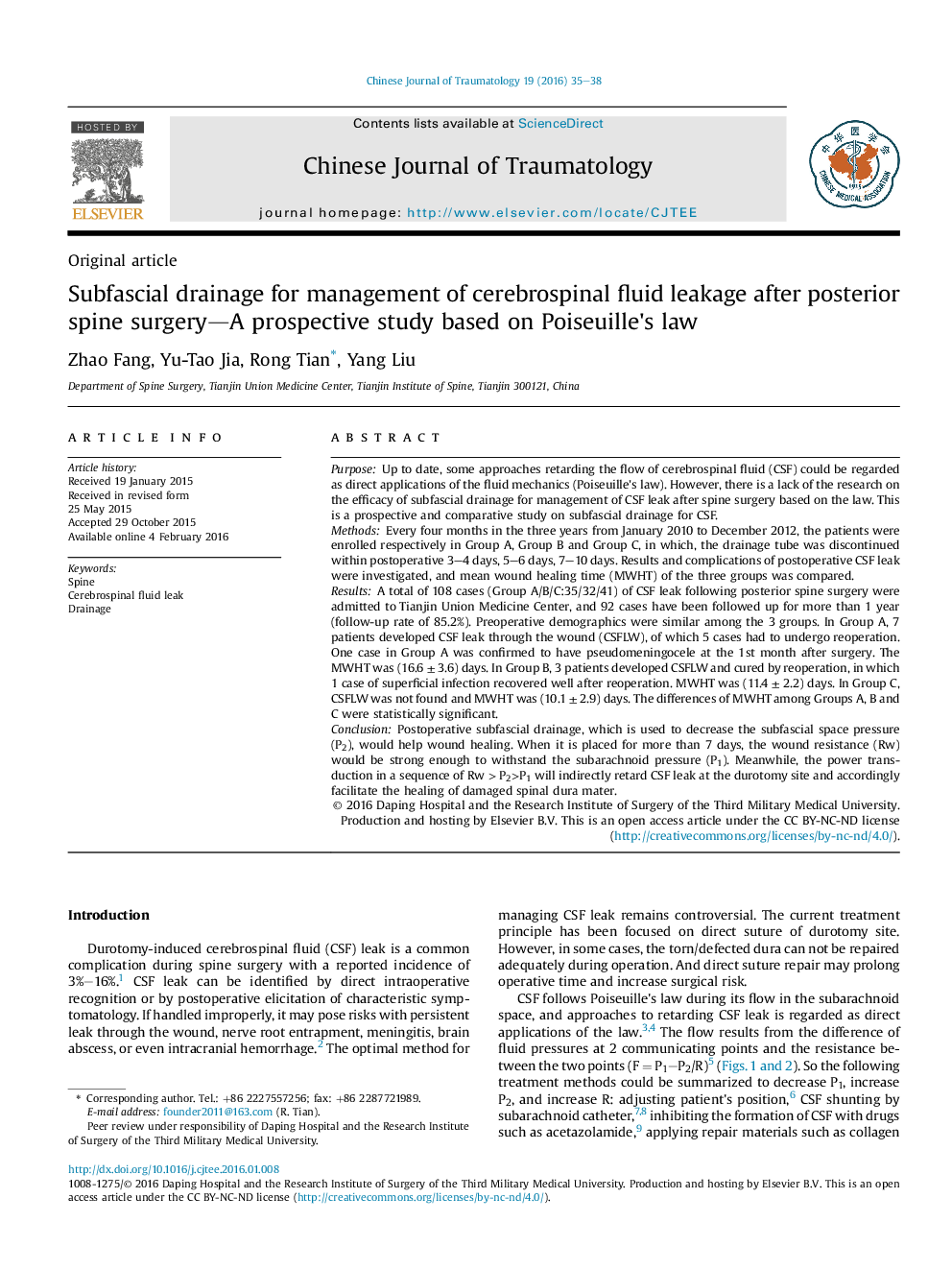| کد مقاله | کد نشریه | سال انتشار | مقاله انگلیسی | نسخه تمام متن |
|---|---|---|---|---|
| 3107111 | 1581747 | 2016 | 4 صفحه PDF | دانلود رایگان |
PurposeUp to date, some approaches retarding the flow of cerebrospinal fluid (CSF) could be regarded as direct applications of the fluid mechanics (Poiseuille's law). However, there is a lack of the research on the efficacy of subfascial drainage for management of CSF leak after spine surgery based on the law. This is a prospective and comparative study on subfascial drainage for CSF.MethodsEvery four months in the three years from January 2010 to December 2012, the patients were enrolled respectively in Group A, Group B and Group C, in which, the drainage tube was discontinued within postoperative 3–4 days, 5–6 days, 7–10 days. Results and complications of postoperative CSF leak were investigated, and mean wound healing time (MWHT) of the three groups was compared.ResultsA total of 108 cases (Group A/B/C:35/32/41) of CSF leak following posterior spine surgery were admitted to Tianjin Union Medicine Center, and 92 cases have been followed up for more than 1 year (follow-up rate of 85.2%). Preoperative demographics were similar among the 3 groups. In Group A, 7 patients developed CSF leak through the wound (CSFLW), of which 5 cases had to undergo reoperation. One case in Group A was confirmed to have pseudomeningocele at the 1st month after surgery. The MWHT was (16.6 ± 3.6) days. In Group B, 3 patients developed CSFLW and cured by reoperation, in which 1 case of superficial infection recovered well after reoperation. MWHT was (11.4 ± 2.2) days. In Group C, CSFLW was not found and MWHT was (10.1 ± 2.9) days. The differences of MWHT among Groups A, B and C were statistically significant.ConclusionPostoperative subfascial drainage, which is used to decrease the subfascial space pressure (P2), would help wound healing. When it is placed for more than 7 days, the wound resistance (Rw) would be strong enough to withstand the subarachnoid pressure (P1). Meanwhile, the power transduction in a sequence of Rw > P2>P1 will indirectly retard CSF leak at the durotomy site and accordingly facilitate the healing of damaged spinal dura mater.
Journal: Chinese Journal of Traumatology - Volume 19, Issue 1, February 2016, Pages 35–38
